Autoencoder Archipelago
This features work I did for the first assignment of Nicholas Cassab and Panagiotis Michalatos' Option Design Studio:
Artificial perception and quantitative aesthetics: the
machinic observer
In this first assignment, we were asked to train a word2vec model on a text corpus of our choosing.
The script generates vectors in an N-dimensional space, in which each word would develop its own "weight" relative to every other word. This weight is dependent on its placement in context with other words in the chosen text, as well as any pre-training on a larger text corpus, such as Wikipedia.
The text I ended up choosing was called Empire of the Winds by Phillip Bowring. Its focus is on the history of the various islands of the Southeast Asian Archipelago before the era of Spanish Colonialism. I was particularly interested in the sections about the Philippines, as it pertains to my own heritage and I was assigned to read it for my Critical Filipino Studies class.
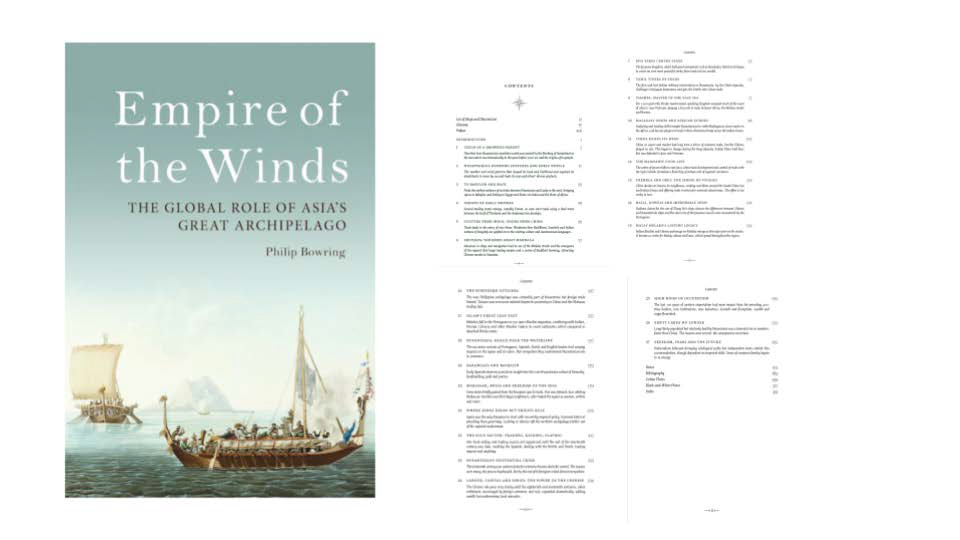
 I was particularly interested in ceramics as archival artifacts. Ancient Filipino texts were largely written in leaves which could not be preserved, so we turn to ceramics as accounts of trade.
I was particularly interested in ceramics as archival artifacts. Ancient Filipino texts were largely written in leaves which could not be preserved, so we turn to ceramics as accounts of trade.
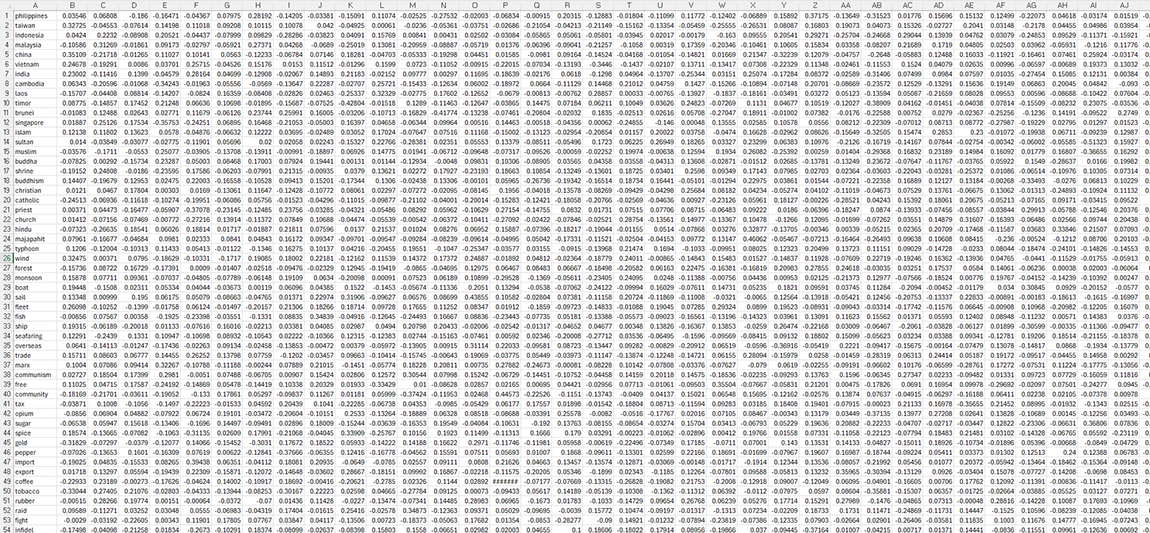
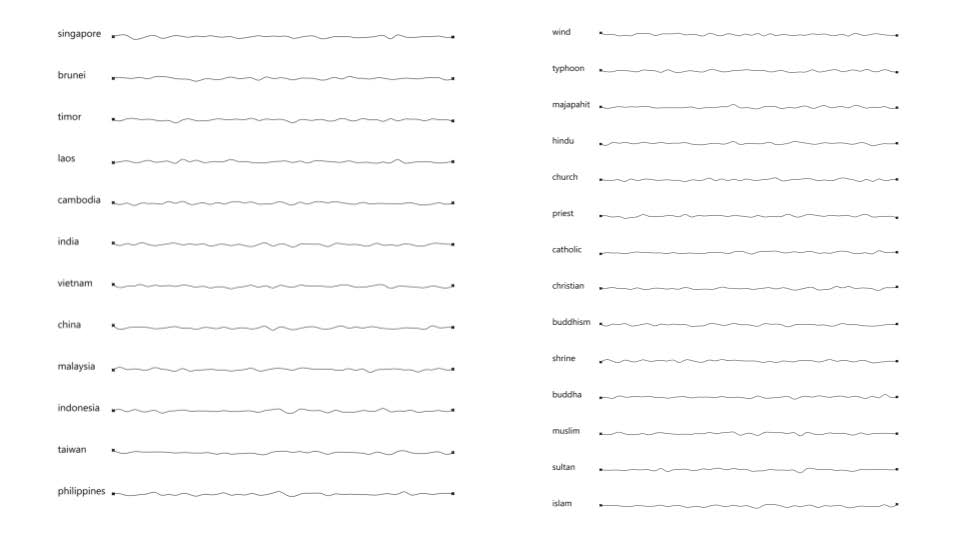 Words found throughout the book were put through the autoencoder. The results of the autoencoder Python script were returned into an output Excel file. This file presented each magnitude in N-dimensional space as a vector (in this case N=50). This data could then be brought into grasshopper in Rhino and interpreted as waveforms.
Words found throughout the book were put through the autoencoder. The results of the autoencoder Python script were returned into an output Excel file. This file presented each magnitude in N-dimensional space as a vector (in this case N=50). This data could then be brought into grasshopper in Rhino and interpreted as waveforms.
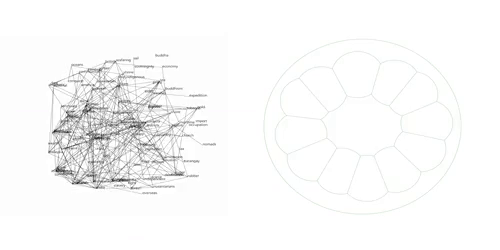 These words could be distributed and anchored around 12 of these Southeast Asian Islands. A spring force model based on the autoencoder weights given to each words reveal their relations and proximities to each other in a latent space, as well as their conceptual closeness to particular islands.
These words could be distributed and anchored around 12 of these Southeast Asian Islands. A spring force model based on the autoencoder weights given to each words reveal their relations and proximities to each other in a latent space, as well as their conceptual closeness to particular islands.
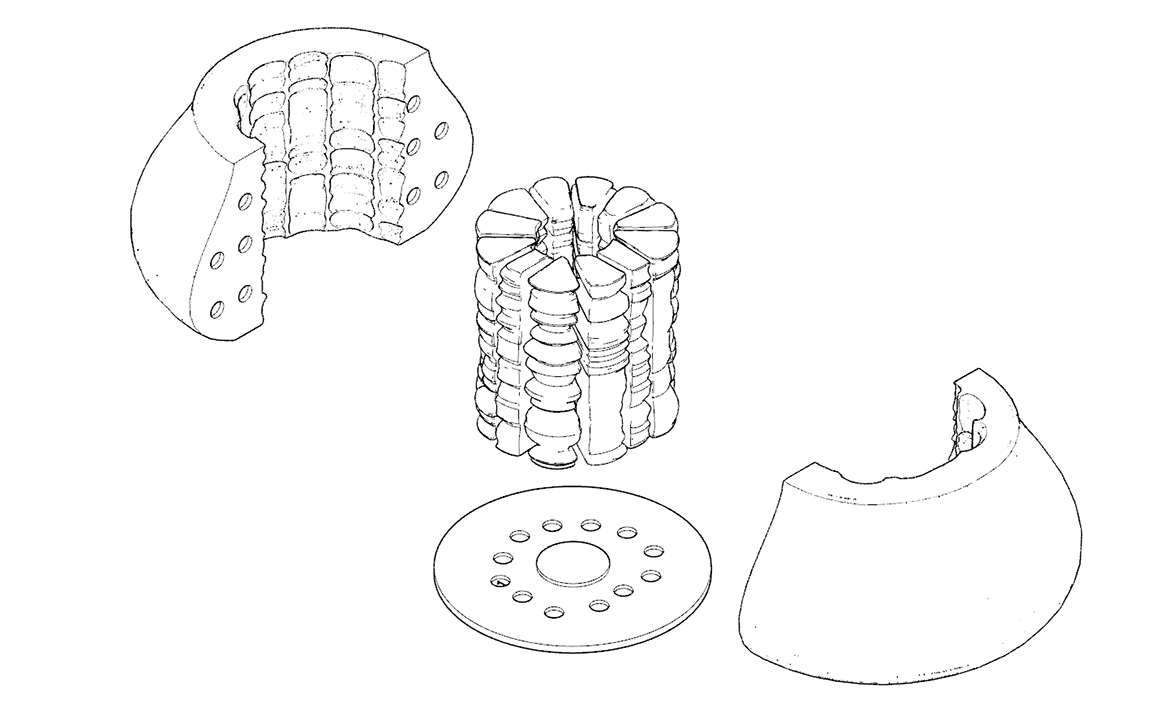 This distribution could be used to fabricate an archival "pot" containing this web of word-wave relationships.
This distribution could be used to fabricate an archival "pot" containing this web of word-wave relationships.
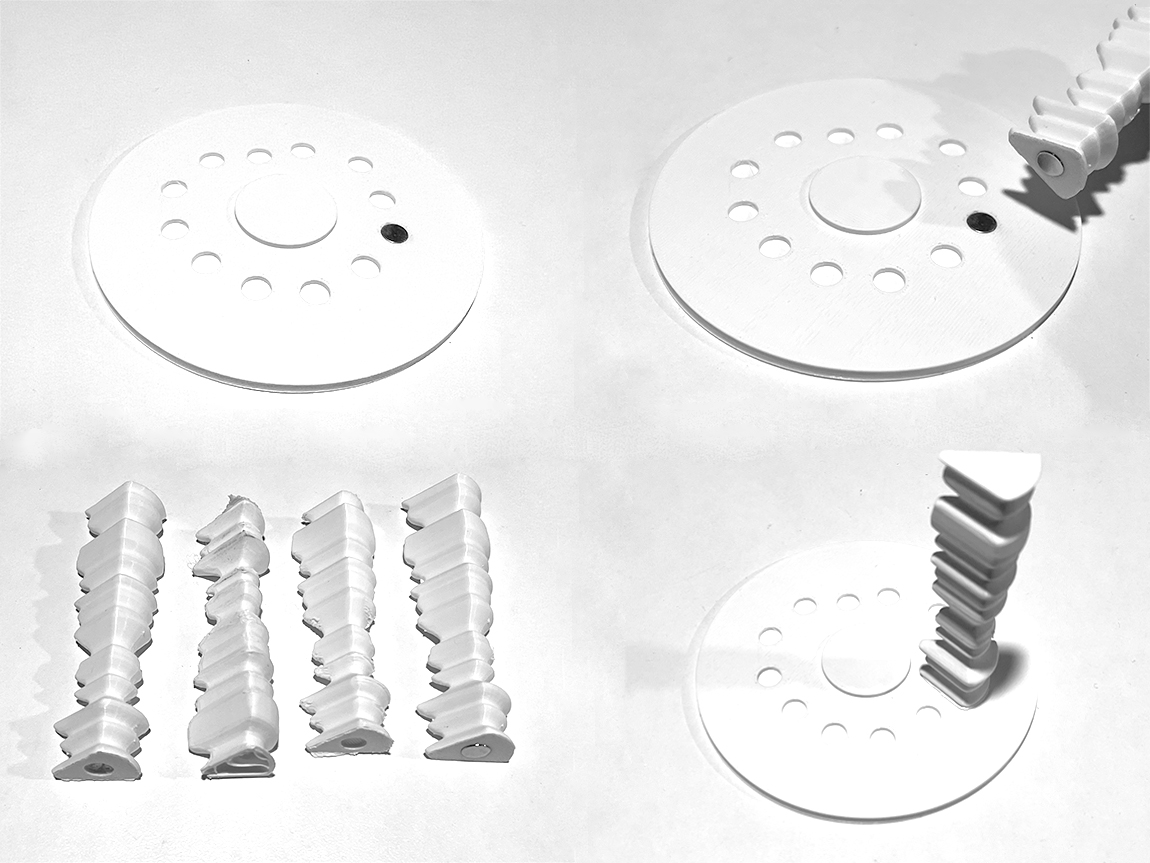 Prototyping for physical fabrication. This includes several fitting tests for magnets to snap each piece into place.
Prototyping for physical fabrication. This includes several fitting tests for magnets to snap each piece into place.











